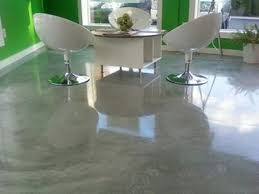Epoxy is a reasonably priced and
hard-wearing solution for garage flooring. It looks perfect, lasts long and can
be a simple DIY project. This is where several homeowners make an error.
Application of the epoxy coating appears to be simple, and if you do not be
anxious about perfection, you can possibly apply epoxy yourself. But, what several
people do not realize is the amount of preparation that has to take place on
their concrete garage flooring before epoxy can be installed.
Find out if garage flooring is
perfect for epoxy
The initial step in concrete
preparation is to find out whether epoxy is even the correct solution for
your garage flooring. At this point we would inspect the concrete closely,
searching for signs of harm, tough stains or other issues. Here are some of the
problems that may ban your garage flooring from being a perfect candidate for
epoxy:
- Previously applied paints and sealers
- Moisture issues (moisture seeping via the concrete)
- Damaged or uneven concrete
- Certain concrete additives
Most of these problems can be
fixed, such as sealers, coatings and paints can be stripped usually. But,
things such as moisture issues can be hard. As a non-porous coating, epoxy will
entrap any moisture within the concrete, which might cause your epoxy floor to
remove over time and even break open under hydrostatic pressure.
Ensure it is clean
After it has
been determined that epoxy can be used on your garage floor safely, the next
step is cleaning. Most garage floors have dirt, oil stains, and other surface
pollutants that may hinder with appropriate adhesion of epoxy. And to get rid
of these pollutants you will need much more than soap and water. Santa Barbara Residential Epoxy Floors
use specialized cleaning agents, as well as a water-jetting machine that guarantees
deep cleaning.
Help Epoxy Adhere
A spotless garage floor is a
superior start, but it still would not guarantee proper epoxy adhesion. Of
course, each project is diverse, but numerous garages Santa Barbara Commercial Epoxy Floors have worked on required a definite
degree of profiling. Profiling is the procedure of opening up concrete pores
and making a rough surface that assists epoxy penetrate deeper into concrete
for a stronger bond. Think of it as sanding a wooden shelf prior to you paint
it.
Profiling is typically done by
grinding or shot-blasting—both of these processes necessitate specialized
equipment. There is also the acid etching method that necessitates pouring an
acid-water mixture on the floor. This can be a risky procedure and can cause
more damage than good if you do not know what you are doing.
Fix Surface flaws
If your garage floor has cracks
or other visible flaws, consult with SantaBarbara Epoxy Garage Floors. If you have ever painted a wall with
high-gloss paint, you would know
that it shows all the flaws you failed to sand smooth. Thus, if you are using
high-gloss epoxy on your garage floor, ensure it is smooth so that it looks its
best.





